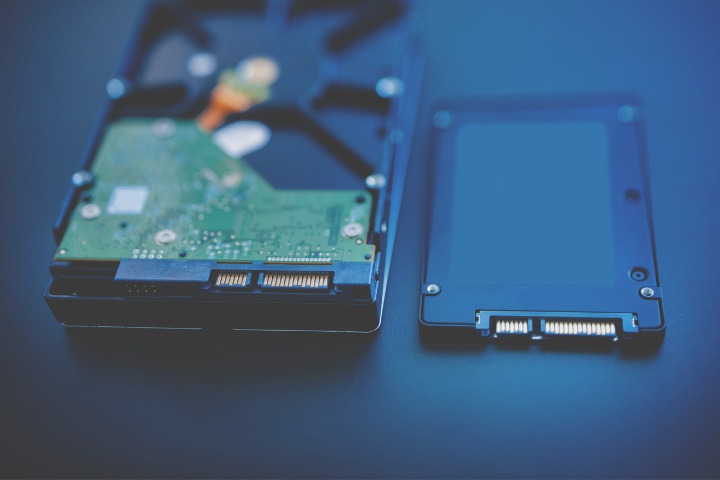NVMe SSDs are the most efficient storage devices in the world right now. They are fast, reliable, and highly effective in storing or transferring data.
One may think that with such speeds more heat energy might be released and it may require a heatsink for high performance. But is that the case? Let us decide whether we need heatsinks for NVMe drives or not.

Do NVMe Drives Need Heatsink?
It is not obligatory to have a heatsink for your SSD. But using an SSD with a heatsink will increase its lifespan and ensures the integrity of the data for a longer time.
SSDs are faster in reading and storing information which results in increased temperatures or overheating. Usually, SSDs don’t easily overheat with normal usage. But they have the ability to go into thermal throttling mode during long data transfers.
When they go into thermal throttling, you will have dangerously high temperatures reaching up to 100 or 120 degrees Celsius. This is very bad for the drive’s health and your data might not be safe with it in the long run.
Therefore, using the SSD with a good quality heatsink is much better even if you aren’t using it for intense tasks. It ensures the long life of the SSD and high performance all the time.
When do NVMe drives begin thermal throttling?
Normally, NVMe drives are designed to operate at higher temperatures. Because the semiconductor used in the drives will not work under cold temperatures. Therefore, you have to maintain at least 40 degrees Celsius for the NVMe to work properly.
With day-to-day usage and occasional file transfers, you will not have any issues. Although they may reach a hotter temperature, you will not have any performance lag or loss of data.
But if you are involved in frequent data transfers that take more than thirty minutes, then, your NVMe may have the possibility of reaching higher temperatures.
Even at such frequent data transfers, NVMe drives will not perform poorly. But you will encounter slow data transfer rate. In the initial stages, it might not be a big issue.
But as you subject the drive to such usages frequently, the controller may not manage the thermals of the drive and eventually lead to high temperatures at all times.
This will damage the drive and you may even lose your data. If you are subjecting your drive to such use cases, then it is better to use a heatsink because they can manage the thermals effectively with it.
Read: SSD and HDD work together on PC?
Do NVMe drives come with heatsinks?
Previous generation SSDs such as the PCIe Gen 3 don’t require a heatsink in most cases. Therefore, they don’t come with heatsinks. But the latest Gen 4 SSDs have the potential to throttle thermally under loads.
Therefore, many manufacturers have started to release their products with pre-installed heatsinks. It is recommended to use the SSDs with heatsinks provided by the manufacturer.
Also, the motherboards provide a discrete place for the SSD slot away from CPU, GPU, and any other high-performing hardware. So that, the heat generated within the case doesn’t spread to the storage drive. Certain motherboards come with a small heatsink for the SSD and in normal use cases, it might suffice in handling the thermals.
Are heatsinks effective in thermal management?
Yes, heatsinks effectively spread the heat generated from the SSD by conducting the heat faster and dissipating it. They are usually made up of high conductors of heat which have the ability to transfer heat faster.
Heatsinks will easily manage the thermals at 50 to 55 degrees Celsius during heavy loads and at idle they can maintain a temperature of 38 degrees Celsius.
The active cooling from the fans inside the PC case will take care of removing the heat from the heatsink. Since heatsinks maintain the temperature at optimal working units for the SSD, it is highly recommended to use them.
Read: Can data be recovery from undetected hard disk?
Can I use NVMe Drives without a Heatsink?
Yes, You can use the NVMe drive without a heatsink and have good performance even at higher temperatures. But in the long run, you may find some downgrade in speed and performance of the drive due to poor thermal management.
This will affect the longevity of the drive and eventually your data too. Therefore, if you want to use the NVMe drives without a heatsink you may do so but don’t subject it to abnormal usages.
Who needs a heatsink in NVMe drives?
Heatsinks for NVMe drives are popularly used by the following industries because of the amount of data being stored and transferred:
- Industrial Internet of Things
- Edge Computing
- Autonomous Data Loggers
- Industrial Automation
- Telecom industry
- Data Centers
- Government Institutions
These sectors need heatsinks for their drives so that they can keep the data secure for a long period without comprising its integrity. Also, they use special rooms and air conditioning to maintain the external temperature too.
Apart from these, normal users may also require heatsinks if they use frequent data transfers, data logging, and store sensitive information. Using a proper thermal management setup for the drives will keep their drive safe and secure.
Conclusion
NVMe Drives provide the fastest data storage and retrieval. It is way better than the mechanical drives and is very efficient too.
But the higher speed might be an issue in the long run and you may find the drives to expel a lot of heat. Therefore, a simple way to protect your drives is by using a heatsink for them.


![Are Hybrid Drives better than SSD? [Hybrid Drive vs SSD]](https://www.pctechkits.com/wp-content/uploads/2023/09/Are-Hybrid-Drives-better-than-SSD-Hybrid-Drive-vs-SSD.jpg)





